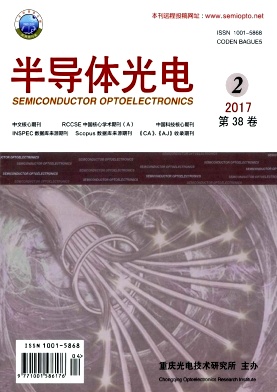半导体光电, 2017, 38 (2): 304, 网络出版: 2017-05-09
基于可见光及近红外的仿生视觉成像技术
Bionic Vision Imaging Technology Based on Visible and NIR Light
摘要
为了解决传统单通道仿生视觉成像系统应用场景受限的问题,提出一种基于可见光及近红外的仿生视觉成像技术。首先,对多光谱光学成像系统进行研究,设计了以棱镜为分光元件的同口径双通道成像系统,对目标物体进行初步成像。然后,利用基于Roberts算子的图像清晰度评价函数并结合自适应变步长搜索策略对目标物体进行清晰成像。最后,搭建了以液体变焦透镜为调焦执行机构的实验装置,验证仿生视觉成像系统及自动调焦算法的实际性能,实验结果表明:光学系统的成像质量可满足实际需求,同时,自动调焦算法完成一次调焦过程的时间仅为1050ms。
Abstract
For traditional single channel bionic vision imaging system, its applications are limited. In order to solve such problems, a bionic vision imaging technology based on visible and near infrared light was proposed. Firstly, the multi spectral optical imaging system was studied, and dual channel imaging system using prism as the spectral component was designed to make the initial imaging of the object. Then clear images were obtained by using the image definition evaluation function based on Roberts operator and the adaptive variable step search strategy. Finally, the experimental device using the liquid zoom lens as the focusing actuator was built, so as to verify the actual performance of bionic vision imaging system and auto focusing algorithm. Experimental results indicate that the imaging quality of the optical system can meet actual imaging demands, meanwhile, the auto focusing algorithm can complete an autofocusing process in only 1050ms.
褚翔, 祝连庆, 娄小平, 孟晓辰. 基于可见光及近红外的仿生视觉成像技术[J]. 半导体光电, 2017, 38(2): 304. CHU Xiang, ZHU Lianqing, LOU Xiaoping, MENG Xiaochen. Bionic Vision Imaging Technology Based on Visible and NIR Light[J]. Semiconductor Optoelectronics, 2017, 38(2): 304.



